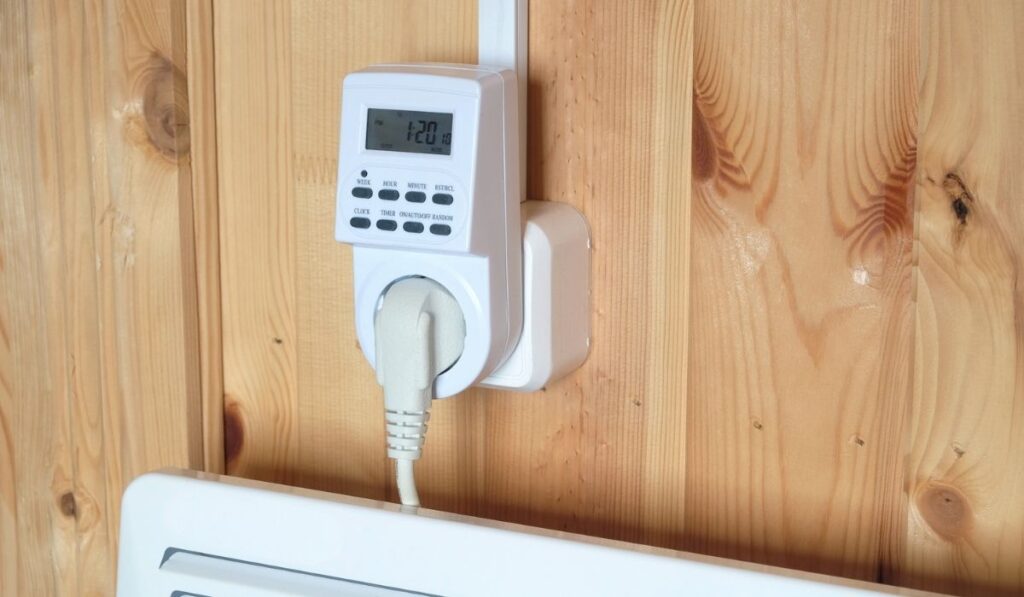Installing a window AC should be one of your top priorities during the hot summer months. However, AC use comes with a side effect: higher electricity bills. And, like most people, you likely have to choose between comfort and high bills versus discomfort and lower bills. Could use a power outlet timer on your window AC help in this situation?
Generally, using a power outlet timer on your window AC is a great idea as it helps in saving energy and money. This gadget also allows you to switch your AC on and off at specific times, enabling you to control temperatures even when you’re not in the house.
Let’s look at exactly what a power outlet time is, the kind of mechanisms it uses, and how to use one on a window AC unit.
What Is a Power Outlet Timer?

A power outlet timer is an interface gadget used to control the power going to a device. It is placed between the electrical appliance and an electrical socket.
This device allows you to turn your AC on and off at specific times or for specified periods. This makes it easy for you to set the temperature in your home before you arrive or even when you’re not there at all.
Power outlet timers are relatively simple devices typically composed of two parts: a plug and an outlet switch (or timer).
The plug fits into the socket where your window air conditioner typically goes, and then your AC cord can go into the outlet.
Once installed correctly with no interruptions between its two main parts, that is, no wires are left exposed, it should work immediately without any further configuration.
Such a connection is ideal for users who want their AC turned on automatically at certain times throughout the day or night without worrying about remembering when exactly those cycles occur.
The timers have two types of setting mechanisms: analog and digital.
The analog system, like this one (on Amazon), consists of a wheel that can be rotated to showtime. The wheel also has teeth-like projections that can be clicked to set the desired time for the appliance to switch on.
Similarly, the digital system uses a digital panel that allows you to set time. A good digital timer is this one from CANAGROW (on Amazon).
Can You Put a Window Air Conditioner on a Timer?

Yes, you can put your window conditioner on a timer. How you do so depends on whether you’ve got a newer unit with a timer built-in or an older one without that feature.
For Newer Units
The power outlet timer is an especially good idea if you have an older window air conditioner that doesn’t have a remote control. However, if you have a newer window unit, there’s usually a timer feature in the remote control.
These timers allow users to turn the unit on and off at predefined times. This is useful when you want the air conditioning unit to automatically kick in when you’re not home or if you want it to shut off after you leave for work in the morning and turn back on once you get home at night.
Many people put their air conditioners on timers because it’s easy and convenient. They don’t want to worry about turning off the unit when they leave or return.
Keep in mind that window air conditioners are designed to work with specific standard household electricity, meaning a recommended power supply level.
Therefore, installing a timer may be a hazard, and it’s advisable to ensure that it can withstand the AC unit’s power requirements and offers a three-pronged outlet. This also allows the unit to remain upright, which otherwise would increase the dangers that the use of timers brings.
For Older Units
For older models, purchasing a power outlet timer can help make the unit more energy-efficient. This is essential if you’re worried about high power bills. The timer will control the unit’s running times, meaning you only set it to run when you are in the house or would like it to be cool before entering.
Additionally, you can use a timer to turn your window air conditioner on and off, allowing you to run it for however long you want without being there to operate it physically. This is especially useful if you have more than one window AC unit in your home, as it means you can set them all up to run at different times.
For example, you could set one unit to run for the afternoon and then set another unit for the evening, allowing you to cool down your home throughout the day without leaving windows open or constantly running fans.
